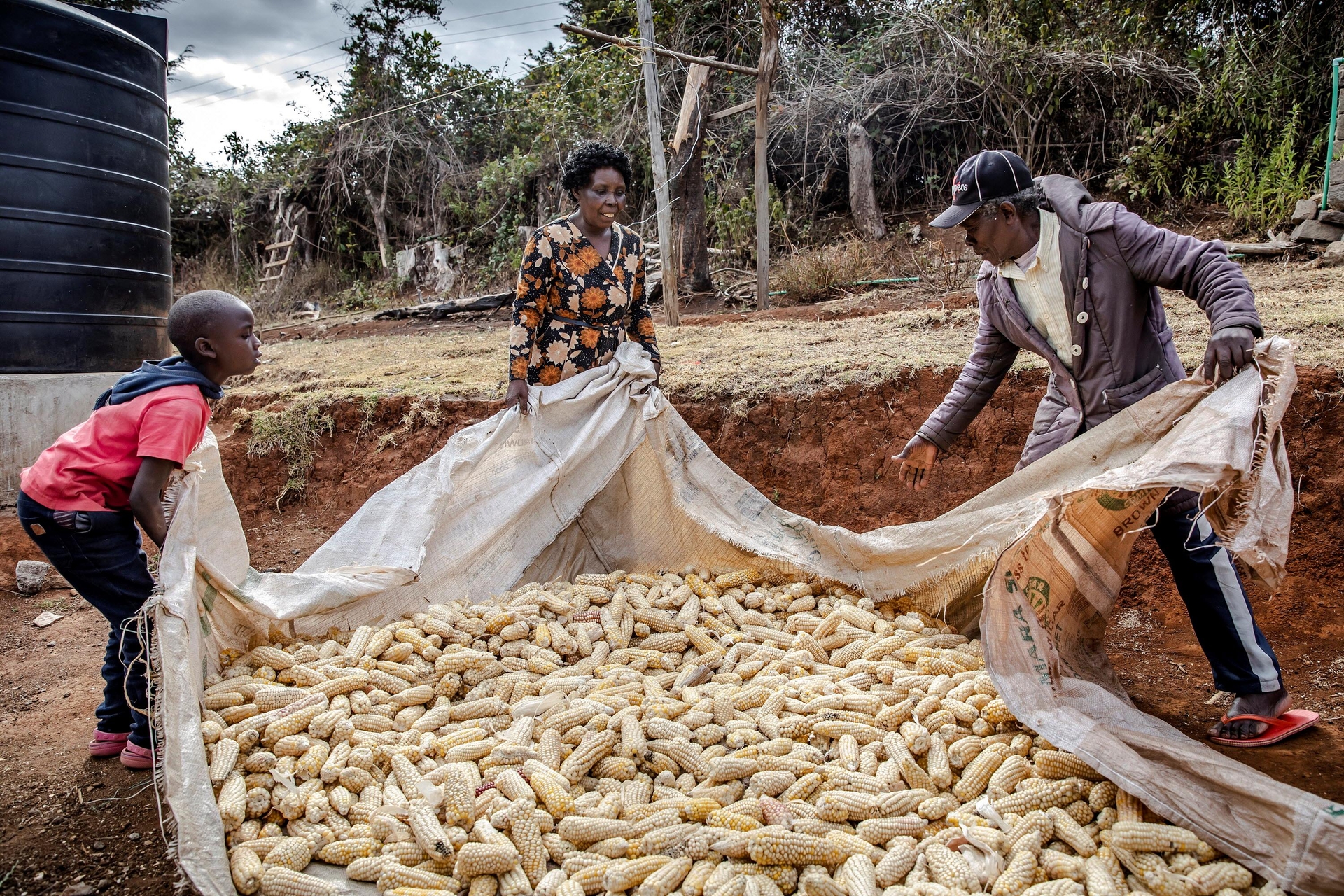May 28, 2025 | 08:19 GMT +7
May 28, 2025 | 08:19 GMT +7
Hotline: 0913.378.918
May 28, 2025 | 08:19 GMT +7
Hotline: 0913.378.918

Gathering maize in Kenya. Photo: FAO/Luis Tato
The benchmark index of international food commodity prices declined in May amid significant drops in quotations for most cereals, vegetable oils and dairy products, the Food and Agriculture Organization of the United Nations (FAO) reported today.
The FAO Food Price Index, which tracks monthly changes in the international prices of commonly-traded food commodities, averaged 124.3 points in May, down 2.6 percent from April and as much as 22.1 percent below the all-time high reached in March 2022.
The FAO Cereal Price Index declined 4.8 percent from the previous month, led by a 9.8 percent drop in world maize quotations due to a favourable production outlook along a sluggish import demand. World wheat prices also declined, by 3.5 percent, reflecting ample supplies and the new extension of the Black Sea Grain Initiative. By contrast, international prices of rice continued to increase in May, sustained by Asian purchases and tighter supplies in some exporting countries, such as Viet Nam and Pakistan.
The FAO Vegetable Oil Price Index dropped by 8.7 percent in May, averaging 48.2 percent below its year-earlier level. International palm oil prices fell markedly from April, as protracted weak global import purchases coincided with rising outputs in major producing countries. World soyoil prices fell for the sixth consecutive month amid a bumper soybean crop in Brazil and higher-than-expected stocks in the United States of America. Rapeseed and sunflower oil prices continued to decline on ample global supplies.
The FAO Dairy Price Index declined by 3.2 percent from April, led by a steep drop in international cheese prices due mainly to ample export availabilities amid seasonally high milk production in the northern hemisphere. However, international quotations for milk powders rebounded as did those for butter.
The FAO Sugar Price Index posted its fourth consecutive monthly increase, up by 5.5 percent from April and reaching a level nearly 31 percent higher than a year earlier. The jump reflected tighter global availabilities, rising concerns over the impact of the El Niño phenomenon on next season’s crops, and shipping delays amid strong competition from soybean and maize in Brazil. The positive outlook for 2023 sugarcane crops in Brazil prevented larger monthly price increases, as did lower international crude oil prices.
The FAO Meat Price Index also rose in May, increasing by 1.0 percent, driven primarily by a steady high Asian import demand for poultry meat and persistent supply tightness for bovine meat in the United States of America.
Rebound seen for global cereal output, with worldwide stocks set to hit record levels
Early prospects for the 2023/24 season point to a likely 1.0 percent increase in global cereal production in 2023 to reach 2 813 million tonnes, according to FAO’s latest Cereal Supply and Demand Brief, also released today.
The predicted increase rests on anticipated gains for maize, rice and sorghum, while wheat and barley outputs might fall below their 2022 levels.
FAO’s first forecast for world cereal utilization in 2023/24 is now pegged at 2 803 million tonnes, up 0.9 percent from the 2022/23 level, mainly due to higher feed use, largely of maize, followed by growth in food consumption, especially of wheat and rice.
Based on these initial forecasts, global cereal stocks in 2023/24 could rise by 1.7 percent above their opening levels and reach a record level of 873 million tonnes, while the world cereal stock-to-use ratio would decline marginally to 30.4 percent.
World trade in cereals in the 2023/24 marketing season is forecast at 472 million tonnes, near the 2022/23 level, as increased traded volumes of coarse grains and rice (January-December 2024 trade for rice) are foreseen to offset an expected decline in global wheat trade.
(FAO.org)

(VAN) Available cropland now at less than five percent, according to latest geospatial assessment from FAO and UNOSAT.

(VAN) Alt Carbon has raised $12 million in a seed round as it plans to scale its carbon dioxide removal work in the South Asian nation.

(VAN) Attempts to bring down the price of the Japanese staple have had little effect amid a cost-of-living crisis.

(VAN) Fourth most important food crop in peril as Latin America and Caribbean suffer from slow-onset climate disaster.

(VAN) Shifting market dynamics and the noise around new legislation has propelled Trouw Nutrition’s research around early life nutrition in poultry. Today, it continues to be a key area of research.

(VAN) India is concerned about its food security and the livelihoods of its farmers if more US food imports are allowed.

(VAN) FAO's Director-General emphasises the need to work together to transform agrifood systems.